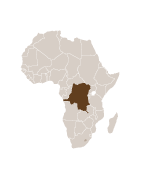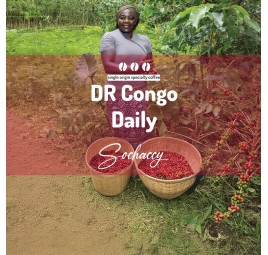Family passion for coffee from the heart of Poland since 2014
3 products


Congo and its coffee
When we start talking about coffee, many people's first instinct is to direct their thoughts to South America. This is understandable, since Brazil is the largest producer of coffee. However, the world of coffee is diverse, with its roots in Africa. African coffee is not only coffee from Ethiopia, but also from countries such as Congo.
The history of coffee in the Democratic Republic of Congo is as volatile as the country itself. After independence in 1964, the country experienced civil wars, dictatorships and coups. Violence and Ebola epidemics have hampered sustainable agriculture, but Congolese are remarkably resilient.
The coffee industry was nationalized in the 1970s, and by the 1980s coffee was a major export commodity. Production declined sharply in the 1990s and 2000s. Political turmoil caused production to shrink to less than 10% of its heyday. Fortunately, a 2012 initiative has put Congolese coffee back on the path to recovery.
Congolese coffee is difficult to track because large quantities are smuggled to neighboring countries such as Rwanda and Uganda, where farmers can earn higher wages. Therefore, Congolese coffee is difficult to access through transparent supply chains, which we take care of at Sochaccy Coffee Roastery.
The Democratic Republic of Congo is an ethnic mosaic, with more than 200 ethnic groups. The country is surrounded by 9 countries: Angola, Burundi, Central African Republic, Republic of Congo, Rwanda, Sudan, Tanzania, Uganda and Zambia, stretching from the eastern to western edges of Africa to the shores of the Atlantic Ocean.
Language and geography of coffee cultivation
French is the official language of the Democratic Republic of Congo, but trade is mainly in Lingala. Kingwana (similar to Swahili), Kikongo and Tshiluba are also popular languages.
This exotic country, famous for its vast tropical rainforests and the legendary meander of the Congo River, is located on the equator. The rich flora includes sugar, palm oil, rubber, tea, quinine, cassava, bananas, corn and fruit. Congolese coffee producers are affiliated with the African Association of Fine Coffees.
An interesting aspect of the Democratic Republic of Congo's history is the development of coffee cultivation. Thanks to its high altitude and fertile soils, Belgian colonists initiated the development of coffee plantations in the early 20th century.
The coffee sector, including coffee from Congo, is currently experiencing a rejuvenation. Congolese coffee is prized for its unique flavors and aromas, resulting from the specific microclimate and soils. The development of Congolese coffee plantations is an important part of the rebuilding of the local economy, which underscores the importance of Congolese coffee on the international stage.
Congo coffee - cultivation
Coffee in Congo is grown at high altitudes, reaching up to 2,000 meters above sea level, where many varieties can be found. Robusta is the main type of bean grown in the DRC, and is characterized by a sharper flavor and higher caffeine content. Robusta is mainly grown in the northeastern part of the country and at lower altitudes. Arabica is also produced, particularly in the Lake Kivu region at higher altitudes.
```











































